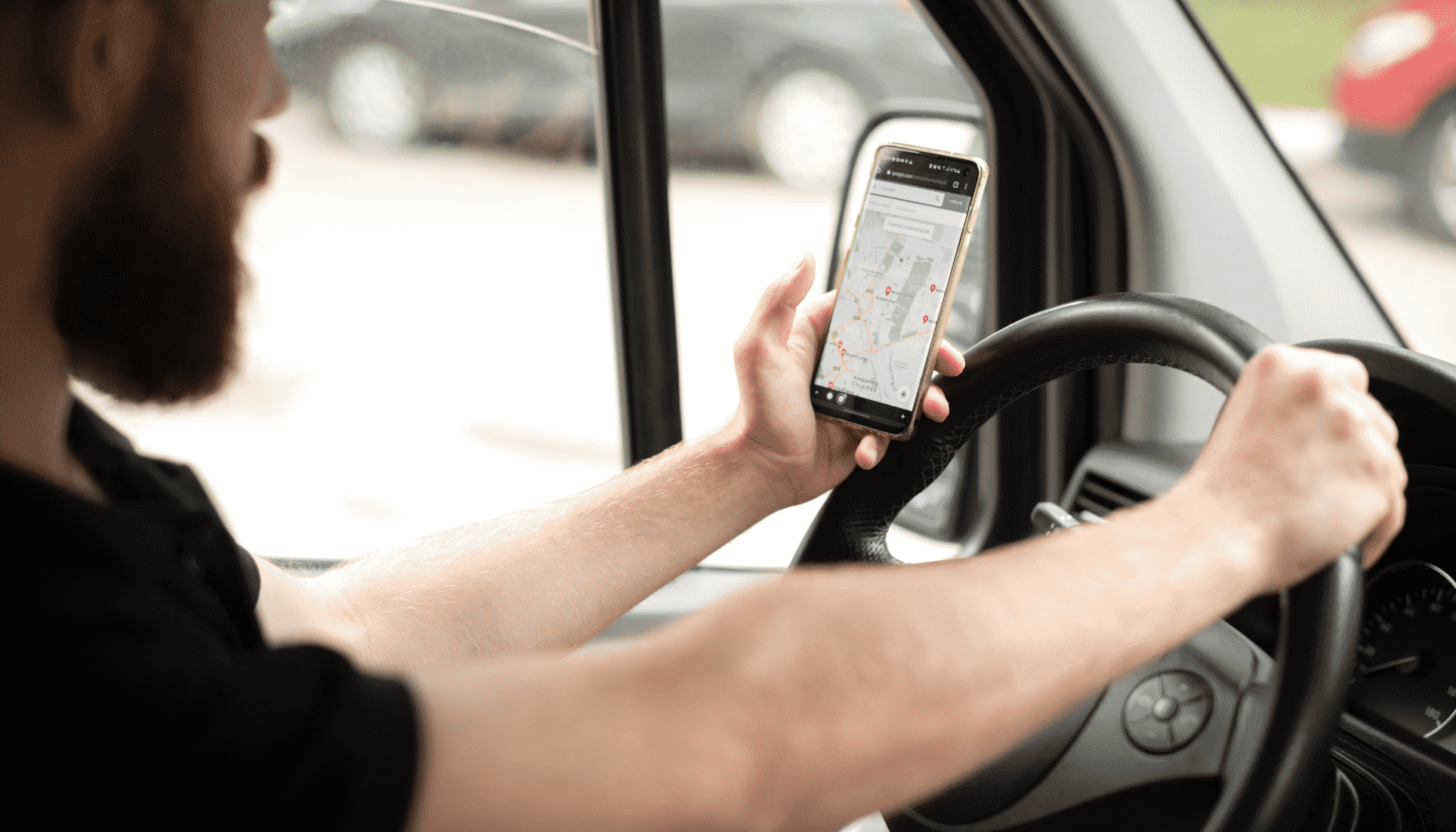If you want to optimize your tax deductions, you must keep track of your mileage for the IRS when you drive your vehicle to create revenue. A car mileage tracker can be a paper-based logbook, an Excel file that records mileage, or a piece of mileage log software, which is the most time-efficient way to keep a mileage log. We’ll go through exactly what you’ll need to keep a presentable mileage log for IRS (Internal Revenue Service), as well as the many business mileage tracker apps on the market and which mileage log apps can help you the most.
Contents
Mileage Logging Requirements for the IRS
There is a slew of requirements and considerations to be made when it comes to keeping a log that meets all requirements of the IRS. Let’s survey some key elements:
Your Vehicle’s Odometer Readings
It’s critical to keep track of your odometer at the start and end of the year so that you know exactly how much mileage needs to be accounted for. This is most readily accomplished with a mileage tracking app, surprisingly only 2 of which allow you to create your logs retrospectively. If you’re facing an IRS audit and have some understandable gaps in your current free mileage log, this can be especially life-saving.
Many people still keep track of their mileage using inefficient documentation methods, which often results in a few trips being missed. We’ll come back to the mileage apps that allow the user to backtrack their mileage a little later.
A Detailed Record of Trips Taken
First off, the distinction between what is personal and what is business is necessary – commuting between your place of business and home is considered personal. Similarly, any trips you make outside of work purposes are, naturally, not considered tax-deductible either.
Secondly, you must have all destination data about the trip available – total distance traveled, the purpose of each trip, and the dates. These are the details of how the IRS stipulates them. Whether you elect to use a free mileage logging method like Excel or an app for mileage, keeping these details isn’t an arduous endeavor.
It’s also worth noting that business itself as a category covers a wide variety of activities – including the sometimes frivolous business lunches that one might take on a daily basis; as long as they can be seen as related to work in some way. Errands too count, as do trips made in the context of representation on behalf of a company. This draws attention to the fact that it is not just the self-employed maximizing tax deductibles with business mileage tracker apps – mileage reimbursement apps are also frequently used by employees representing a small business or enterprise company.

Current IRS Mileage Rates
Generally, the standard mileage rate is the most common way of looking at business mileage. Incorporating a deduction amount of 58.5 cents per mile driven, the math is simple: you can claim back 58.5 cents on each mile you drive with this method, which means that if you do 40,000 miles per year – you’re up for $23,400 in tax deductions.
The Alternative: Actual Expenses Method
This approach emphasizes itemized deductions based on actual costs. More specifically, this refers to all types of vehicle-related charges in general – any cost associated with your vehicle must be supported by receipts.
It’s also worth noting that if you choose the actual expense approach when registering your vehicle for business purposes for the first time, you’ll have to use it for the rest of your lease, or as long as you drive the automobile for business purposes. That is why you should do your research beforehand to determine which strategy is ideal for you.
However, it doesn’t matter if you use the actual expenses method or the standard mileage rate, you still have to use an online mileage tracker or mileage calculator app to maintain an adequate mileage log.
Mileage Logging for Reimbursement Purposes
We’d be derelict if we didn’t address this vast and vital subject. Generally, employees must log their mileage using either a track my mileage app or a business mileage app. Mileage reimbursement deals with any situation involving employees driving vehicles for business purposes or for work, and it is especially important because the situation is similar to what we’ve outlined in this article.
Mileage reimbursement has several varied characteristics, the key difference being that companies can pick how they reimburse their employees for the kilometers they drive. Consider the following programs, many of which are currently instituted by a great many companies:
- The Federal Mileage Rate: many firms simply compensate employees at the federal mileage rate of 58.5 cents per mile traveled. This rate is the same as the standard mileage rate – which exists as a representation of the market’s wider consideration involving the general cost of operating a vehicle.
- Car Allowance Lump Sums: Some businesses choose to establish a predetermined sum that is designed to cover all vehicle-related costs and is normally paid on a monthly basis. This is becoming less frequent these days, as some people believe it is exploitative to employees, but it is still an option.
- FAVR stands for fixed and variable rates, and that is exactly what it refers to. For fixed costs, a fixed sum is paid, and for miles driven, a variable cost per mile rate is chosen. Because the standard mileage rate includes all expenditures associated with the operation of a vehicle in general, this variable cost per mile is always substantially lower.
In our experience, in all of the above situations aside from the one where employees receive a car allowance, having a mileage tracker for small businesses is a vital part of the equation, which is where we first found MileageWise to be so useful. We had explored and used many miles trackers in the industry, but for reimbursement, you really need something which has a team’s dashboard.
The provider might be considered something of an underdog, but it blew the more mainstream players out of the water when we used it. Moving to conclude, let’s take a closer look at the company in the context of the wider market.
The Best Mileage Apps in 2022
We made some brief mention of MileageWise from a team’s point of view; but also noteworthy in this space are Driversnote, Everlance, and even MileIQ – who seem to be the market’s most popular company.
Still, MileIQ lacks manual trip input and editing, which can sometimes be brutal if auto-tracking features don’t always perform perfectly (and they sometimes don’t). MileageWise offers the most features – with 3+1 auto-tracking settings, an in-built IRS auditor, and the ability to recover mileage retrospectively if you pay a little more as a monthly subscription.
Since so much of the software on this market starts out free, however, we recommend that you try the free trials, too.
Free Mileage Logs – Are They Possible?
They are, indeed. The thing is, the free options vary greatly, and some are a little lackluster when it comes to exactly what it is they offer for free:
- MileIQ offers “30 free drives” total, then it’s time to pay up. After that, it’s $5.99 per month.
- Everlance allows you to use 30 free trips, manually recorded each month – great if you’re just starting out in business and you don’t make too many trips either for yourself or your employer.
- Driversnote offers just 20 trips for free per month, though you can import entire logs from Excel or PDF files.
- MileageWise stands out once more – giving your access to a full version of their software for 14 days – a free trial where you don’t even have to give your credit card.
As you can see, the underdog shines once more. MileageWise’s IRS mileage log mostly comes out on top because of the fact that it is an IRS-proof mileage log app, which creates a basic mileage log that can be guaranteed to meet all the requirements previously addressed in this article.

